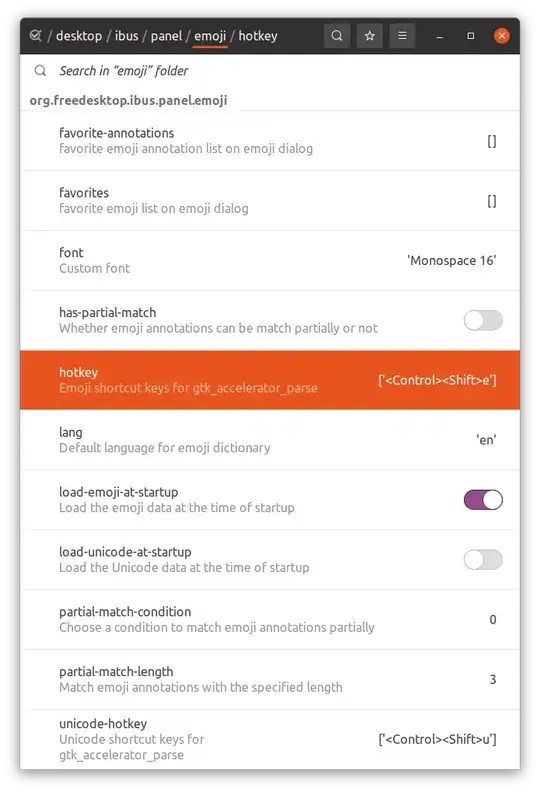In previous versions of Ubuntu, one could press Ctrl-Shift-E in any text input area to activate the “Emoji Choice” popup – see, for example, these answers to “What does [Ctrl] + [Shift] + [e] do, while typing text?” or “How to insert an emoji into a text in Ubuntu 18.04 and later?”. This has several advantages over the “Insert Emoji” (Ctrl-.) method available e. g. in gedit, the main ones being
- It works with any text input area, not just specific programs like gedit.
- It not only allows searching and choosing emoji, but any Unicode character.
However, when I try pressing Ctrl-Shift-E in Ubuntu 20.10 (e. g. in gedit or Firefox), nothing happens. I still see the shortcut showing up when running ibus-setup:
and in the dconf editor:
Was the keyboard shortcut for the “Emoji Choice” popup removed? And how can I get it working again?

